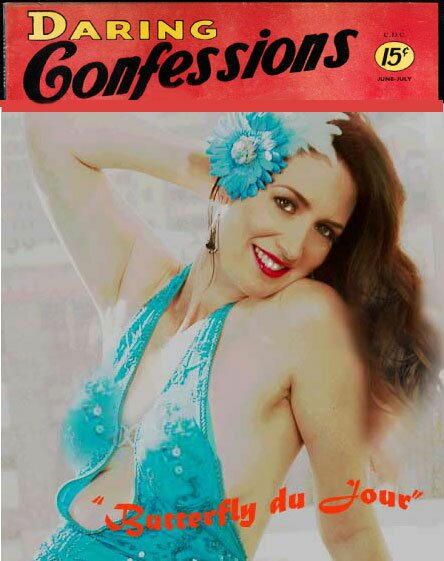Kiki? She deserved her reputation as the queen of Montparnasse. ~ Andre Salmon
A young girl of barely eighteen, porcelain skin, short, deep black hair, sauntered through the bar with feline grace and a certain aura of sexual verve. She wore a threadbare shawl over her dress and shoes that made her seem like a little girl playing dress up in her mother’s heels. Her beauty captured the artists of Montparnasse.
Alice Prin, nicknamed Kiki, charmed the artists with her unique appeal. She posed for Kisling, Man Ray, Soutine, Per Krogh, and Foujita. She was the darling art model during the time of Picasso and peacetime Paris. She was their muse and inspired them to create photographs, make paintings, and love.
Born in Chatillon-sur-Seine, Côte d’Or, Burgundy, France on October 2, 1901, she was born out of difficulty to a single mother in Côte d’Or and literally born in the street. Little Kiki lived with her grandmother and a bunch of cousins, and her mother did what she could to send money from Paris. When Kiki was twelve, she decided to join her mother in Paris, leaving her grandmother’s home. She was in and out of schools, troubled and unable to tolerate the structure. She found a job at a printing press as an apprentice binder, and, for fifty centimes a week, she bound the Kama Sutra.
At fourteen and a half, she was taken care of by a baker on the Place Saint Charles. She woke early and delivered bread. Then she did housework, errands, cooking, and helped the baker’s son. The son was a healthy boy of fifteen and began to make sexual advances towards Kiki. She refused.
Sometime soon after, Kiki witnessed two lovers kissing in the square, she “felt all funny! I rolled around on my bed and it felt good… then I got frightened.” Overwhelmed by the discovery of her own sexual desire, Kiki decided to try her newfound seduction techniques on the baker’s son, and in the act of kissing and caressing, realized she was still afraid to go further.
She began to wear make-up on her face, and this was not done! She was emerging as a woman, and her sexual energy was floridly steeped in the grungy decadence of 1920′s Paris. Soon she was posing for artists in their studios in the nude. Kiki’s mother discovered that her daughter was posing for an artist, and came to the artists studio to find her nude before a man much older. Horrified to find her daughter this way, she exclaimed, “Whore! Miserable whore!” Accusing her and running off distraught. Kiki did not see her mother again.
Kiki became a maid for a while until she was fired from her job. Young Kiki had nowhere to go except with her girlfriend, Eva, who lived in a tiny room. Her friend Eva was a young prostitute who used her little bed to take men that paid for her time with them. She instructed Kiki on how to do as she did, but fifteen-year-old Kiki confessed to her friend that she was still a virgin.
This began her training in sex, as her friend Eva guided her on how to pick up wealthy men and get paid for her sexual attentions. They went to cafes and solicited the older well dressed men that bought them croissants and café crèmes. Kiki was learning how to use her feminine wiles in order to get what she wanted. She had a few older men treat her nicely and found that it wasn’t such a bad way of life.
Then, Soutine. Chaïm Soutine was a Jewish painter from Belarus and friend of artist Amadeo Modigliani. Soutine discovered Kiki and kept her warm in his place at the Cité Falguière. Soutine introduced her to all of his artist friends, but still Kiki had not found the love she was looking for.
Then she met the Polish painter, Maurice Mendjizky, who gave Alice the nickname “Kiki” — a loving diminutive of “Alice” in Greek. Maurice Mendjizky was the first man in her life. She posed for him and artists Foujita and Kisling.

The eccentric Japanese artist Foujita hired her to pose for him one day. Kiki went to Foujita’s studio on the Rue Delambre. She wore a coat and was otherwise barefoot.
“Take off your clothes,” Foujita requested.
Kiki removed her coat and there was nothing underneath. She was completely naked and hairless around her pubic area. Foujita, fascinated, examined her skin, and exclaimed, “You don’t have any hair!” Kiki found a black pencil in the artist’s work space and with it drew in pubic hair.
“How’s that?” Kiki said tartly.
“Amusing,” Foujita stated.
Then Kiki moved Foujita away from his easel and took his place. She drew a portrait of the artist. When she was finished, she demanded to be paid.
“The fee for my modeling session, please.”
Foujita, gobsmacked by her chutzpah, paid her. She grabbed the drawing of Foujita that she created and said goodbye. She went off to Café du Dôme. The following day, Foujita found her at the Rotonde. He demanded she come back to his studio to paint her. It was then that Foujita painted a large canvas titled Reclining Nude of Kiki. The painting was sent to The Salon d’Automne.
The painting of Kiki was a sensation. It was talked about in the press, and bought for eight thousand francs. Foujita gifted his lovely model with extra payment after he sold the work. With the money Foujita gave her, she went out and bought a new dress, a coat, and shoes. Foujita saw Kiki in her new garments and was dazzled, immediately wanting to paint another work of her. But she said she had another artist to pose for. Kisling.
“All I need is an onion, a bit of bread, and a bottle of red [wine]; and I will always find somebody to offer me that.”
~ Kiki de Montparnasse
Kiki was the Queen of Montparnasse. She has been immortalized in many famous works, including Man Ray’s Le Violon d’Ingres. She was the mistress of Man Ray and a friend of Chaim Soutine, Jean Cocteau, Max Ernst and other artists and writers like Ernest Hemingway and Tsuguharu Foujita.
From Wikipedia:
Adopting a single name, “Kiki”, she became a fixture in the Montparnasse social scene and a popular artist model, posing for dozens of artists, including Chaim Soutine, “Julian Mandel” (a pseudonym), Tsuguharu Foujita, Francis Picabia, Jean Cocteau, Arno Breker, Alexander Calder, Per Krohg, Hermine David, Pablo Gargallo, Mayo, and Tono Salazar. Moise Kisling painted a portrait of Kiki titled Nu assis, one of his best known.
Her companion for most of the 1920s was Man Ray, who made hundreds of portraits of her. She is the subject of some of his best-known images, including the notable surrealist image Le violon d’Ingres[1] and Noire et blanche.[2]
She appeared in nine short and often experimental films, including Fernand Léger’s Ballet mécanique without any credit.

** credit to Dan Franck’s book Bohemian Paris for the biographical information on Kiki de Montparnasse

















 Melt With You
Melt With You Women in Lust {Erotica Book Review}
Women in Lust {Erotica Book Review} Obsessed: Erotic Romance for Women
Obsessed: Erotic Romance for Women Dr. Estrogen (or) How I Learned to Stop Worrying and Love Menopause
Dr. Estrogen (or) How I Learned to Stop Worrying and Love Menopause Scent of a Lover
Scent of a Lover Goddess du Jour: Taryn Andreatta “La Amante”
Goddess du Jour: Taryn Andreatta “La Amante”